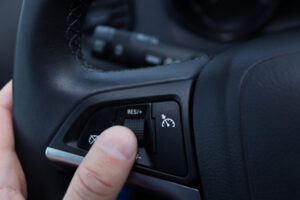
Many cars today offer a variety of features that make operating a car more convenient for drivers. Cruise control is designed to allow the driver to set the speedometer at a constant speed without using the accelerator. This feature can be used to keep from speeding or from traveling too slowly, or to set a consistent pace when traveling long distances by highway. Although this can be a great asset for the driver, there are potential dangers associated with this driving aid.
Cruise control was invented in the 1960’s when a blind man named Ralph Teetor noticed that a lawyer with whom he was riding slowed down when speaking and sped up when listening. This annoyed Teetor, and he decided cruise control was necessary to help a driver keep his or her vehicle at a consistent speed.
Teetor’s invention offers convenience on long drives where the speed limit stays the same for a majority of travel time. However, drivers must ensure that it is being used with caution.
A 2014 study conducted by the Vinci Autoroutes Foundation for Responsible Driving suggests several drawbacks and disadvantages to using cruise control. Some highlights of the results are listed below.
- Using cruise control causes a driver to have less control over the vehicle.
- Reaction times are slower when using this aid.
- When drivers have less work to do, they become less alert behind the wheel.
- Using cruise control causes a decline in a driver’s attention to detail.
Bernadette Moreau, General Delegate of the Vinci Autoroutes Foundation, concluded, “The less work the driver has to do, the less alert he will be behind the wheel. It is widely known that these tools are very effective to maintain safe speeds but call for user savviness and awareness” in order to ensure safety.
If you have been injured in an accident with someone who you believe was not using safety or awareness in operating a vehicle, contact Colorado’s experienced auto accident attorney, Mack Babcock, for a free consultation.

